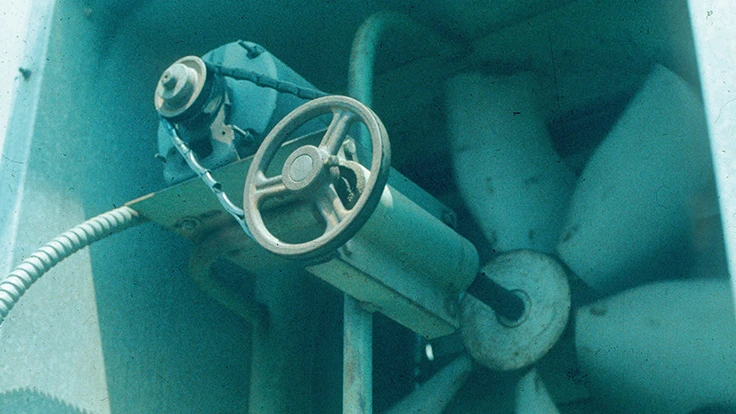

Photos: John W. Bartok, Jr.
To function properly, a greenhouse ventilation system should provide cooling, humidity removal and air mixing. Use the following tips to check your systems before hot weather arrives.
Natural ventilation
- Use side vents in addition to roof vents to quadruple the cooling rate. In freestanding greenhouses, vent openings should be provided on both sides of the ridge and on both sidewalls. Vent operation should be such that the leeward vents are opened to produce a vacuum at the top of the ridge. The National Greenhouse Manufacturers Association (NGMA) recommends that the combined sidewall vent area should equal the combined ridge vent area and each should be at least 20% of the floor area. Note that 80 to 90% of ventilation is due to wind currents.
- Open doors to allow more air in. The more air that can get in will result in more cooling. Natural ventilation is more uniform than fans but will not cool the greenhouse to a lower temperature than ambient outside air.
- Use open weave interior shade screens. These work best as they allow hot air to escape uniformly throughout the house. An alternative is to crack closed weave screens, but these may create uneven growth due to the sun shining on some parts of the plant canopy.
- Turn off air circulation fans. HAF fans should not operate when natural ventilation is being used, as it may counteract the ventilation air flow. This also increases energy use. Each fan adds 2.5 to 5 kilowatt hours to your daily electric bill.
- Add a skirt to rollup sidewalls. A plastic strip 12” to 24” high will keep cold drafts from ground-grown plants early in the season.
- Maintenance is important. Check fan belts for wear and tension. A squeaking fan is a good indication the belt needs attention. Clean fan blades to increase air flow. Lubricate shutters.
- Redirect air circulation fan flow. One way to increase air flow in long houses is to direct all the HAF fans to blow from shutter end to fan end. This will help to move the air along at a faster rate, increasing cooling. In most houses this means reversing the direction of one row of fans. Also seal cracks and close doors so that air travels from the intake shutters to the fans. This will give the maximum air flow through the crop.
- Save energy by staging fans. Use two stage thermostats or an electronic controller to turn on fans as the greenhouse temperature increases. Remember that the largest-diameter fans with the smallest motors are usually the most electrically efficient and provide the greatest cubic feet per minute, per energy input. When replacing 1 and 1.5 horsepower motors select NEMA premium motors with an efficiency of 86%. These use 8 to 10% less electricity than older standard motors.
- Clean insect screening. Spray water from the inside or vacuum from the outside to remove dust, leaves, insects and other things that may block the tiny pores. Be sure there is enough screen material that the total pressure drop in the greenhouse, as measured with a manometer, is less than 0.1 inches water static pressure. Otherwise, the greenhouse may overheat.
- Use evaporative cooling to lower the greenhouse temperature to several degrees below outside ambient. Portable evaporative coolers that are easy to set up have worked well for some growers. Maintenance on fan and pad systems mainly involves keeping the pad clean of dirt and debris. Algae can be reduced by flushing or bleeding off some of the water and adding an algaecide. Nozzle clogging on fog systems from chemical and particulate matter is the greatest problem and can be controlled by the use of rain or treated water.

Photos: John W. Bartok, Jr.
Fan ventilation

Explore the April 2019 Issue
Check out more from this issue and find your next story to read.
Latest from Greenhouse Management
- Anthura acquires Bromelia assets from Corn. Bak in Netherlands
- Top 10 stories for National Poinsettia Day
- Langendoen Mechanical hosts open house to showcase new greenhouse build
- Conor Foy joins EHR's national sales team
- Pantone announces its 2026 Color of the Year
- Syngenta granted federal registration for Trefinti nematicide/fungicide in ornamental market
- A legacy of influence
- HILA 2025 video highlights: John Gaydos of Proven Winners





